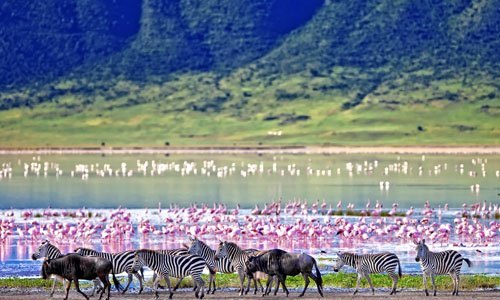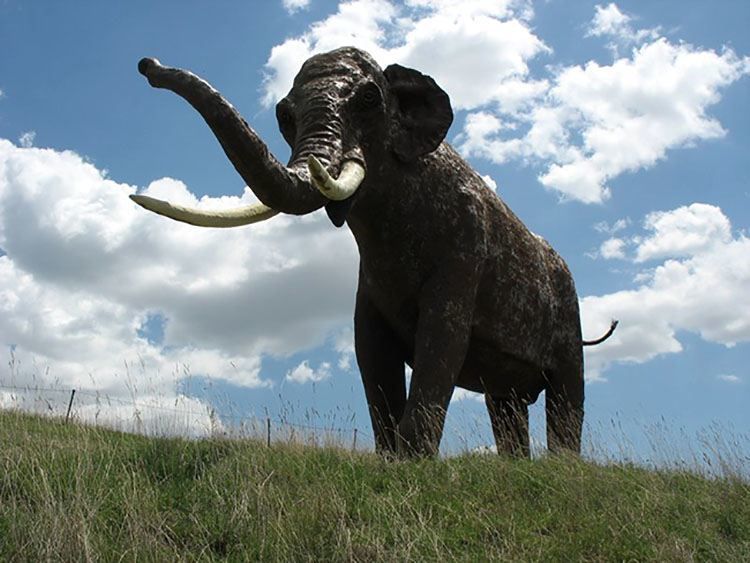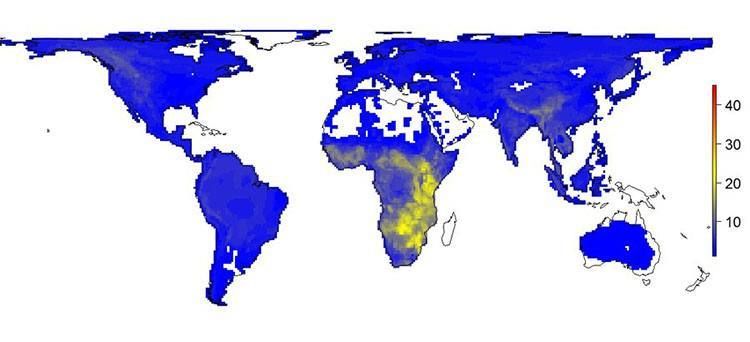

Researchers out of Denmark have found that without humans, the world would have a lot more large mammals roaming around. “In a world without humans, most of northern Europe would probably now be home to not only wolves, Eurasian elk (moose) and bears, but also animals such as elephants and rhinoceroses,” researchers said in a statement.
Yes, you read that right. Northern Europe would be home to elephants and rhinoceroses. The study, conducted by researchers from Aarhus University in Denmark, investigated “what the natural worldwide diversity patterns of mammals would be like in the absence of past and present human impacts, based on estimates of the natural distribution of each species according to its ecology, biogeography and the current natural environmental template.”
And it’s not just northern Europe that has seen a dramatic decrease in mammal diversity. “In most places, there’s a very large deficit in mammal diversity relative to what it would naturally have been,” said Professor Jens-Christian Svenning, one of the coauthors of the study.
The report is a follow up to a previous analysis which found that the expansion of Homo sapiens across the planet and not a changing climate was to blame for the mass extinction of large mammals in the last 100,000 years.
The current world map of mammal diversity shows that Africa is virtually the only place with a high diversity of large mammals. There’s been a dramatic decrease in North and South America, which historically had very high levels of large mammal diversity.
“Most safaris today take place in Africa, but under natural circumstances, as many or even more large animals would no doubt have existed in other places, e.g. notably parts of the New World such as Texas and neighboring areas and the region around northern Argentina-southern Brazil,” said Postdoctoral Fellow Søren Faurby, who is the lead author on the study. “The reason that many safaris target Africa is not because the continent is naturally abnormally rich in species of mammals. Instead it reflects that it’s one of the only places where human activities have not yet wiped out most of the large animals.”
Global efforts to reduce worldwide species loss have only increased in recent years. The documentary Racing Extinction, which made its world premiere at the Sundance Film Festival, highlights the fact that we are in the midst of a sixth mass extinction. The rate of species loss is 1,000 times faster than the natural rate because of human activity with as many as 30 to 50 percent of all species possibly heading toward extinction by mid-century. And some of those could even go extinct this year.
YOU MIGHT ALSO LIKE
Bernie Sanders: The Environment Deserves a Debate
700 Walrus Seen Near Shell Oil Rigs in Arctic as Obama Visits Alaska
Humans to Blame for Catastrophic Drought in California, Scientists Say

 233k
233k  41k
41k  Subscribe
Subscribe 


